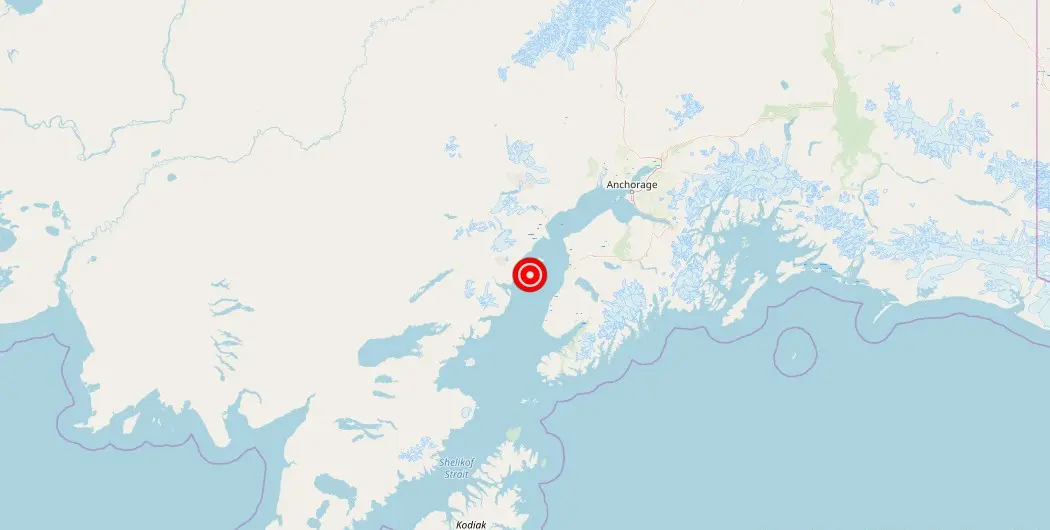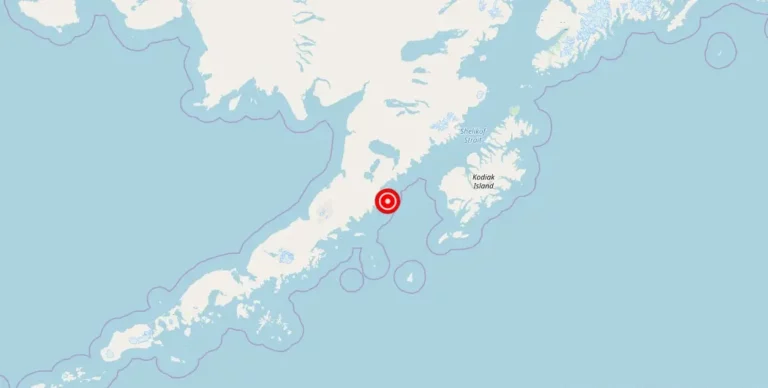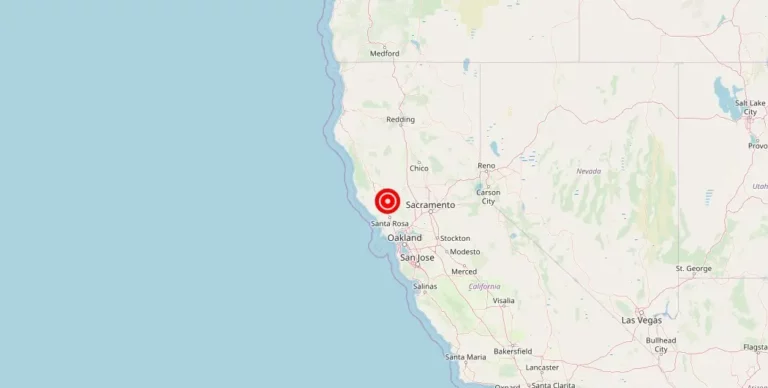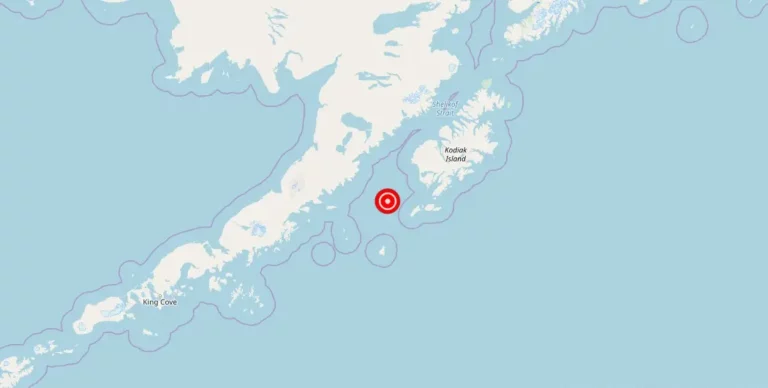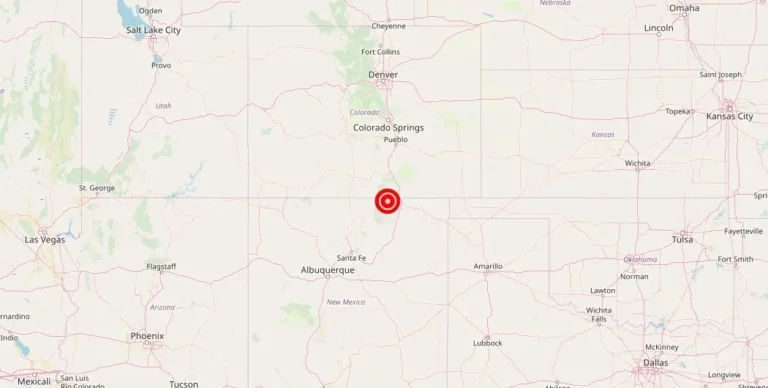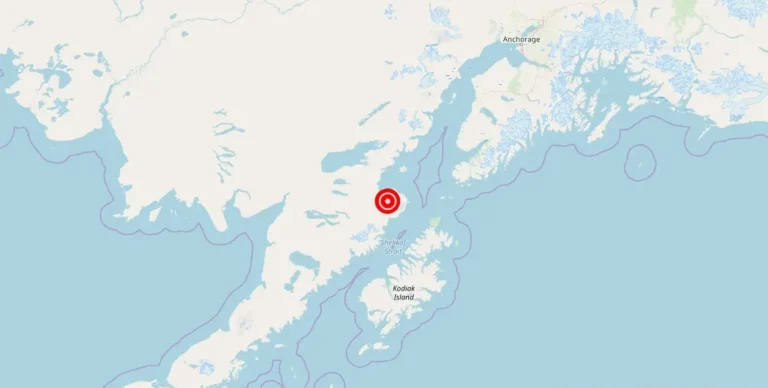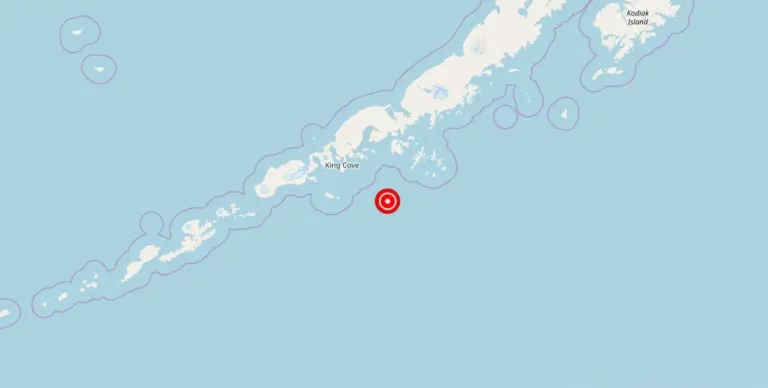Magnitude 1.9 earthquake strikes near Ninilchik, Alaska
On Wednesday, March 15, a magnitude 1.9 earthquake hit 40 km northwest of Ninilchik, Alaska, according to the US Geological Survey (USGS). Although considered a minor earthquake, it could still be felt by nearby residents. This quake serves as a reminder of the ongoing seismic activity in Alaska, which sits on a major continental fault line.
Get to Know the Region Where the Recent Earthquake Occurred

Ninilchik is a small town located on the Kenai Peninsula in Alaska, approximately 40 km northwest of it lies an area with significant seismic activity. This region is part of the Ring of Fire, a horseshoe-shaped area around the Pacific Ocean characterized by frequent earthquakes and volcanic eruptions. The tectonic plates in this area are constantly moving, causing seismic activity that ranges from small tremors to major earthquakes. The area around Ninilchik has experienced several significant earthquakes throughout history, including one in 1964 that measured 9.2 on the Richter scale and is considered the most powerful earthquake in US history. Due to the potential for seismic activity in the region, monitoring and preparation for earthquakes and tsunamis are essential for the safety of those living in and visiting the area.
Potential Hazards and Dangers from Ninilchik, Alaska Earthquake and Future Risks
Ninilchik, Alaska, United States, is situated in an area prone to seismic activity. Residents and visitors to the region can expect potential hazards and dangers following a recent earthquake. The aftershocks of earthquakes can be very dangerous, especially if the primary earthquake was of high magnitude. Strong aftershocks have the potential to cause additional damage to buildings and other infrastructure.
Specific hazards that people may face include rockslides, landslides, and damage to critical infrastructure such as utilities, bridges, and roads. People may also experience power outages, water and gas difficulties and communication disruptions.
In addition, people in the area should be aware of the potential for tidal waves, especially those living or traveling near the coast. Tidal waves, also known as tsunamis, can cause widespread flooding and damage to buildings and infrastructure. There is also the risk of liquefaction, which occurs when soil or sand turns from a solid state into a liquid state as a result of shaking, which can lead to damage to buildings and infrastructure.
Residents and visitors are advised to take precautionary measures in the event of an earthquake. If an earthquake should occur, individuals should seek shelter under a sturdy desk or table and stay away from windows and glass objects. Once the earthquake has passed, individuals should remain cautious and alert for potential aftershocks and other seismic disturbances.
Local and state government organizations, such as the Federal Emergency Management Agency (FEMA), will be providing disaster relief assistance to impacted residents and visitors. These organizations will focus on providing aid and supports to those most in need following the disaster.
In summary, residents and visitors to Ninilchik, Alaska, United States should be aware of the potential risks and hazards associated with an earthquake in the area. They should take necessary precautions to ensure their safety, and be vigilant to potential aftershocks and other seismic activity. In the event of an earthquake, they should follow the advice and guidance of local and state government agencies to reduce the impact of the disaster.
Resources for Those Affected by the Alaska Earthquake
- FEMA (Federal Emergency Management Agency) – provides information and assistance for individuals and communities affected by disasters.
- Red Cross – offers disaster response and recovery services, including shelter, food, and emotional support.
- Alaska Earthquake Center – provides updates and information on earthquakes in Alaska and offers resources for earthquake preparation and safety.
- USGS (United States Geological Survey) – provides real-time earthquake data and offers resources for earthquake preparedness and safety.
- Alaska Department of Public Safety – offers emergency management and response services for disasters in Alaska.
